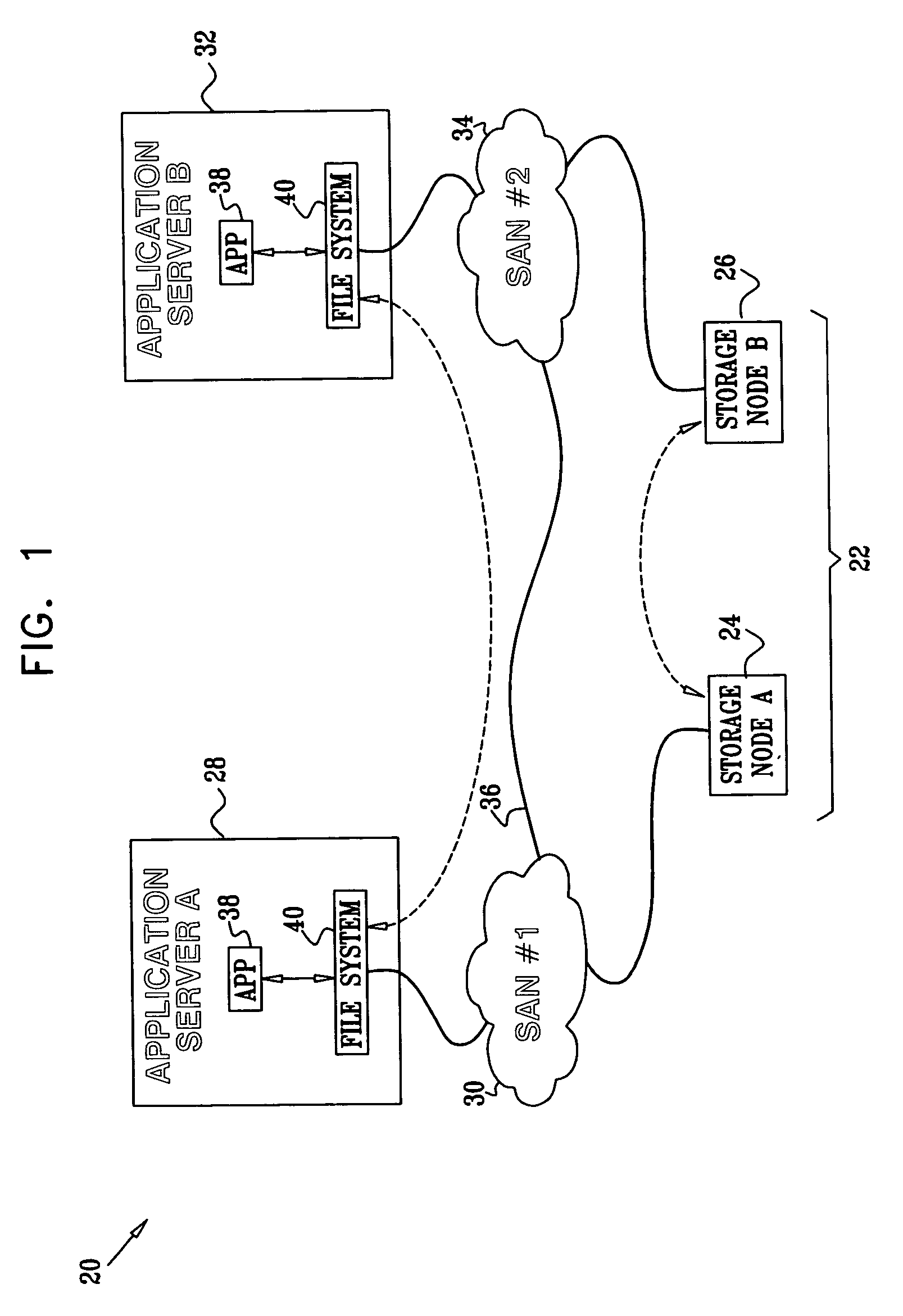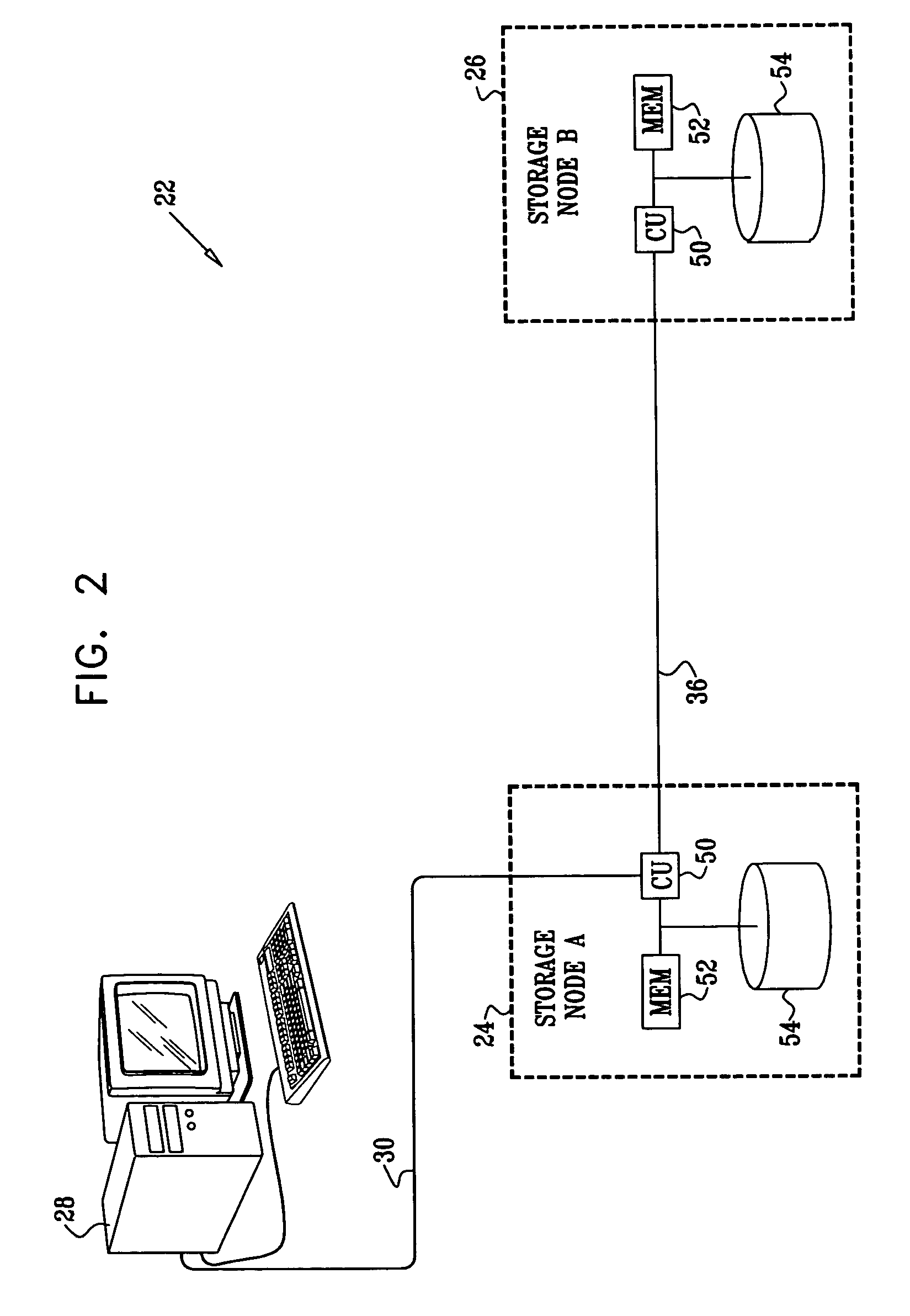Storage system with symmetrical mirroring
a storage system and mirroring technology, applied in the field of data storage systems, can solve the problems of synchronous remote mirroring adding unacceptable latency to host write operations, and achieve the effects of reducing the load on the primary storage subsystem, improving the performance of distributed applications, and ensuring data synchronization
- Summary
- Abstract
- Description
- Claims
- Application Information
AI Technical Summary
Benefits of technology
Problems solved by technology
Method used
Image
Examples
Embodiment Construction
[0062]FIG. 1 is a block diagram that schematically illustrates a distributed computing system 20, in accordance with an embodiment of the present invention. System 20 is based on a distributed storage system 22, which comprises storage subsystems 24 and 26. Subsystems 24 and 26 are labeled “storage node A” and “storage node B” for convenience.
[0063]To write and read data to and from storage system 22, a first host computer 28 (referred to alternatively simply as a “host”) communicates over a communication link with subsystem 24. Typically, the link is part of a computer network, such as a storage area network (SAN) 30. Alternatively, host 28 may communicate with subsystem 24 over substantially any suitable type of serial or parallel communication link. Data written to subsystem 24 by host 28 are then copied, generally in an asynchronous, background process, over a high-speed link 36 to subsystem 26. For the sake of data security, subsystem 26 is typically located in a site remote fr...
PUM
 Login to View More
Login to View More Abstract
Description
Claims
Application Information
 Login to View More
Login to View More - R&D
- Intellectual Property
- Life Sciences
- Materials
- Tech Scout
- Unparalleled Data Quality
- Higher Quality Content
- 60% Fewer Hallucinations
Browse by: Latest US Patents, China's latest patents, Technical Efficacy Thesaurus, Application Domain, Technology Topic, Popular Technical Reports.
© 2025 PatSnap. All rights reserved.Legal|Privacy policy|Modern Slavery Act Transparency Statement|Sitemap|About US| Contact US: help@patsnap.com



